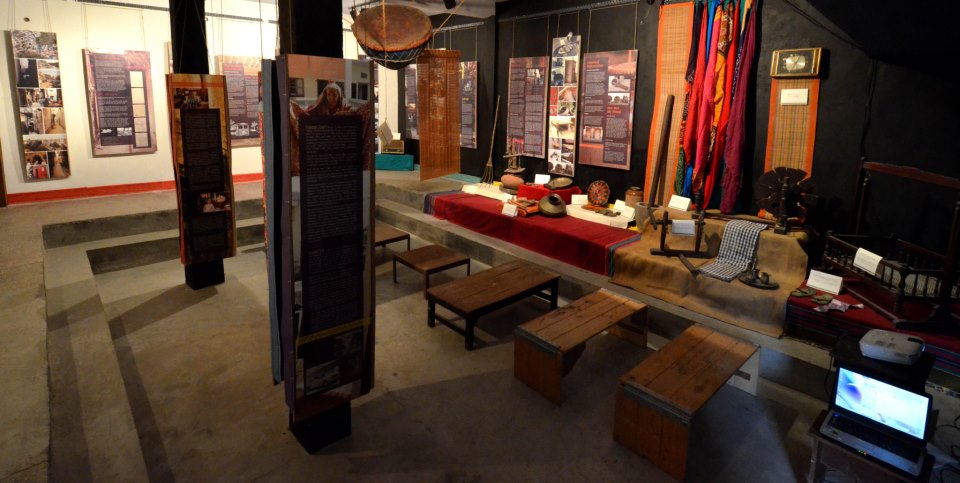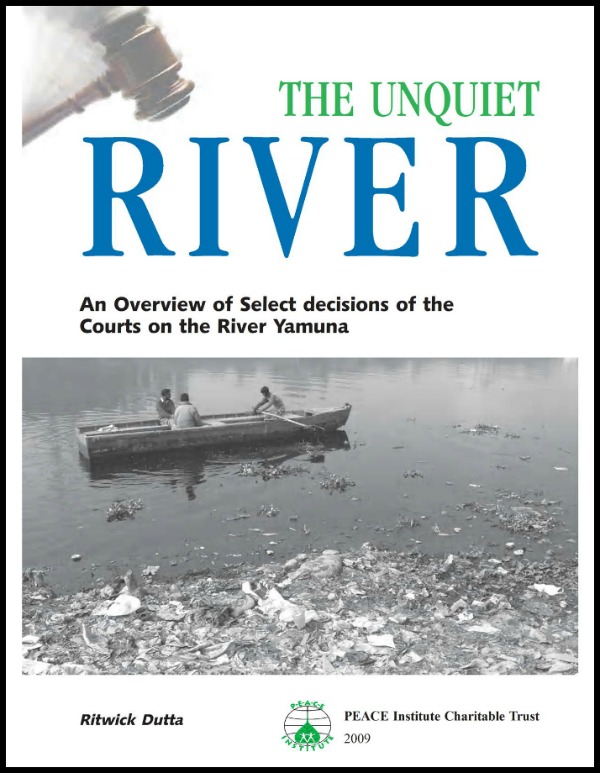Ganga - Yamuna Doab
Yamuna Nama: a book review
Posted on 22 Dec, 2013 05:51 PMThe Yamuna Manifesto -or Yamuna Nama- is a bilingual book with passages in both Hindi and English, published as part of the Yamuna Elbe project. In five deceptively short sections, the book takes us from the birth to the river to its future.

The missing water bodies of Western Uttar Pradesh
Posted on 01 Sep, 2013 11:54 AMTraditional water bodies such as bawdis and talabs have long since been an integral part of rural life in India providing water, fish and sometimes even just a venue for people to chit chat. The flat plains in Western Uttar Pradesh, where the Ganga and Yamuna rivers meet, is no exception.

Open Confusion: Charba and Coca Cola
Posted on 10 Aug, 2013 08:36 PMCharba is a small village in Uttarakhand with a population of 10,000. It is located in the 'Vikas Nagar' area just beyond Dehradun - a section that the government has denoted an industrial area. This little village shot to fame when Hindustan Coca Cola Beverages (HCCB) decided to build a plant there.

Turtle relocation program or turtle poaching plan?
Posted on 09 Aug, 2013 12:23 PMRajkumar needs no urging to talk about Sundari. She is evidently a favourite of his. When we met, he regaled me with stories of her beauty, her smartness and her incredibly sweet nature. When he finally brought her out to meet me, I failed to see any signs of a winning personality or of towering intelligence. "Well," I rebuked myself, "you've only met her for two minutes.

Yamuna’s Delhi
Posted on 04 Aug, 2013 07:55 PMHistory tells us cities were settled and abandoned several times in Delhi. But I have not come across an explanation for why the city was repeatedly established at the same site. Surely, the presence of the river Yamuna to the east of Delhi would have been a reason. The Yamuna, though is not a small river; it flows for 1,300 km.

Elitist Delhi scores low on environmental awareness
Posted on 23 Jun, 2013 08:18 AMEnvironmentalist Robert Swan, the first person to walk the North and South Pole, was in Delhi last year. He launched phase IV of Project Search, which aimed to promote environmental awareness and sustainable lifestyles among students. Swan noted that not many Delhiites scored high on topics of environmental awareness.

The story of how blissful ignorance allows Hindustan Coca-Cola Beverages to deprive Mehdiganj, Varanasi of its water
Posted on 01 Apr, 2013 11:39 PM
Bottled drinks are commonplace and we often reach for them without a thought. We may even feel good about our purchase as we read about the companies' commitment to water security' printed on the label.
What does 'being water positive' really mean for the villages where manufacturing plants are situated ? This article examines the case of one such plant in Mehdiganj, PO Benipur, Arajiline block, Dist Varanasi and its effect on the groundwater levels in the area. The village has led an agitation against 4 specific negative impacts of the plant, acheiving moderate but measurable success.
This year, the movement comes to a crisis point as despite a warning by the Central Groundwater Development Board, the plant applies for a four-fold expansion.
An exhibition at Studio Safdar in Shadi Khampur traces the history of the urban village and its water systems
Posted on 10 Feb, 2013 07:12 PMGuest post: Amita Bhaduri
West Delhi’s dusty neighbourhood, Shadi Khampur now has its own museum, in the traditional brick-and-mortar sense. I live nearby, have worked out of an office here and am familiar with the alleyways. But I got to know only now, what life in the neighbourhood was like. Its rich history and its connect to larger narratives from the past, like the series of land acquisitions in Delhi, the Emergency, and the anti-Sikh riots of 1984 which had gone largely undocumented and unarchived have been chronicled in the Neighbourhood Museum of Local History of Shadi Khampur, at Studio Safdar, a cafe cum bookstore.

Neighbourhood Museum at Studio Safdar
Source: Facebook page on “Public Art Project at Studio Safdar”
"Taral Darpane Samajer Mukh" by Joya Mitra – Bengali translation of Anupam Mishra's booklet "Tairne Wala Samaj Doob Raha Hai" on floods in Bihar
Posted on 21 Jul, 2012 04:19 PM
The second edition of the book came out in 2008 just after the devastating Bihar floods in the year when the river thundered down from the Himalayas on its way to the sea sweeping half of Bihar.
The unquiet river: An overview of select decisions of the courts on the river Yamuna
Posted on 14 Jan, 2012 06:40 PMThe river has attained the distinction of being perhaps the river attracting the most judicial attention in india, after the Ganga. This report analyses the various laws and judicial decisions pertaining to the Yamuna and their effects on the river.